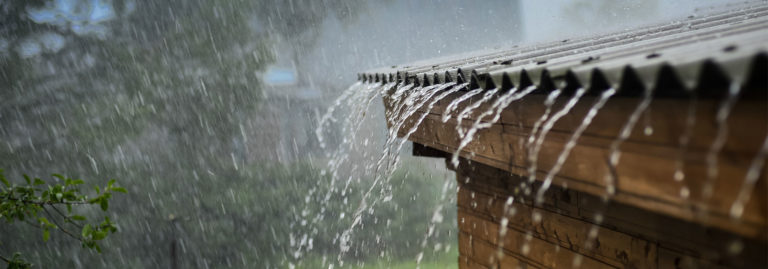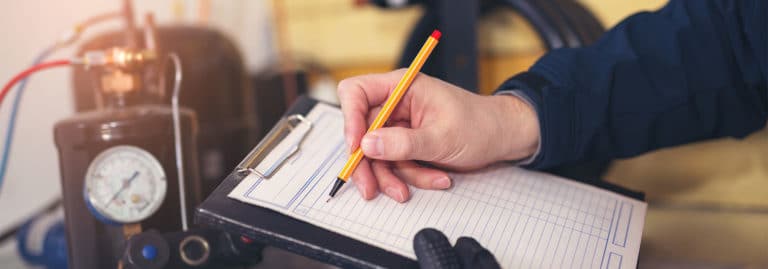How to Stop & Prevent A/C Leaks
The best thing to do if you’re experiencing a serious air conditioning issue is always to call a professional technician. At Airrific Air Conditioning & Heating, our Sarasota HVAC experts provide trusted and affordable AC repair, installation, and maintenance work. However, when it comes to AC leaks, there are a few things you can do on your own. Our goal is to help you get the most out of equipment, thorough our reliable services and through simple tips to help you care for your system. Keep reading to learn how to stop and prevent AC leaks from our licensed and factory-trained HVAC pros, and remember, if you’re not sure what to do, the best option is always to call Airrific for fast and affordable service.
Dealing with Leaks from Frozen Evaporator Coils
One of the most common causes for AC leaks is a clogged air filter. You see, when your air filter gets dirty, air is not able to go through it, meaning your unit’s evaporator coil is likely to freeze. This is because the evaporator coil is what transfers refrigerant through your system. Without proper airflow, the coil is not able to absorb heat, and therefore airflow in your system, is restricted, causing the formation of ice, hence the coil freezing, hence the leaking. Blocked vents/registers, a broken motor, or a lack of refrigerant, as well as general wear and tear and dirtiness may cause this problem.
When the evaporator coil freezes, your system will no longer be able to take in heat, meaning that in addition to causing leaks, the air in your home will also be warm. Problems with your compressor may also occur. Given how much additional trouble can result from this issue, it’s best to just turn off your unit if when dealing with frozen coils. Fortunately, modern AC systems come with automatic shut-off switches for clogged air filters and condensate lines (more on those later.)
The best way to prevent frozen evaporator coils is to simply replace your AC unit’s air filter every 30-90 days. In the summer especially, filters should be changed minimally every 30 days, given how much you are likely to be running you AC. Make sure you’re also not covering any air vents and registers and preventing air from flowing through your system properly.
If you have replaced the air filter and your AC is still leaking, you may have a problem with the unit’s refrigerant, in which case you will need to call a technician.
Dealing with Leaks from Drain Pans
The drain pain can be found underneath the indoor air handler in your AC unit—the same area where you can find the evaporator coil, as it happens. The purpose of this component is to collect condensation from the AC unit, so in many ways, it is your first line of defense against leaks. Anytime you’re not running your AC, it should be safe to examine the drain pan and attached condensate drain—which dispenses runoff outside—for leaks.
If the drain pan overflows, you should be able to clean up the wetness with a wet-dry vac. If, however, you find that the pan is cracked or broken, and that’s what’s causing your system’s leak, you may want to fix it with water sealant for the time being, before eventually replacing the pan altogether.
Granted, when we talk about replacing the drain pan, it is important to clarify that we are talking about replacing the one underneath your unit. Replacing this component is not difficult and can be accomplished fairly easily on your own. However, your system also has another drain pan which is welded underneath the evaporator coil. If this part becomes damaged and causes a leak, you will need to hire a technician to deal with it.
Dealing with Leaks from Condensate Drain Lines
As already mentioned above, the condensate drain line dispenses runoff from your system directly outside your home. Because this part is damp, dark, and moist, it creates an ideal breeding ground for mold, which can lead to nasty clogs, causing the drain line to spring a leak.
If you find your AC system’s condensate drain line is clogged with mold or debris, first locate the opening to the pipe by your air handler’s drain pan. You should find it pointed up at a 90 degree angle. Unscrew the cap on top of the line, and pour around 6 ounces of vinegar inside. Flushing the line out with vinegar every couple of months should stop any mold from growing inside.
If you’re dealing with a serious clog, however, and it is too late to solve the problem with vinegar, there is something else you can do. You will need a wet-dry vac, which can be connected to your system’s condensate drain line via attachment. You will still want to flush the line out afterwards, but the vacuum should effectively stop any clogs, preventing further leak damage form occurring.
Need Air Conditioning Installation? Talk to your air conditioning repair experts at Airrific Air Conditioning & Heating today! Call (941) 371-3355.






